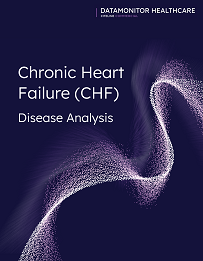Report Library
All Reports
Datamonitor Healthcare CV&Met Disease Analysis: Chronic Heart Failure (CHF)
April 24, 2024
CHF patients are divided into two main groups: those with reduced ejection fraction (HFrEF) and those with preserved ejection fraction (HFpEF), as defined by the measurement of left ventricular ejection fraction (LVEF), the central measure of left ventricular systolic function. The LVEF cut-off has varied over time, but AHA/ACC/HFSA and ESC guidelines now utilize ≤40% for HFrEF and ≥50% for HFpEF, with a third group in the middle having mildly reduced EF (HFmrEF). Despite similar symptoms and disabilities, HFrEF and HFpEF appear to have features of distinct syndromes, with differing epidemiology, LV morphology, and cellular changes, though some have challenged this view.
Owing to the links between obesity and more serious HFpEF, the prescription weight loss agents semaglutide and tirzepatide could be quite useful for these patients. The STEP-HFpEF trials (one in diabetics and one in non-diabetics) showed that semaglutide was associated with improvements in symptoms, physical limitations, exercise function, and weight loss. Consistent improvements were observed irrespective of weight loss in the trial in diabetics, in which approximately 40% less weight loss was reported, indicating that the mechanism of benefit extends beyond weight loss. Success could additionally help reimbursement in obese HFpEF patients, since coverage for the treatment of obesity itself is not universal.
This Datamonitor Healthcare report contains a Disease Analysis module.
| Indications Covered: |
Chronic Heart Failure - Preserved Ejection Fraction (Chronic HFpEF)
Chronic Heart Failure - Reduced Ejection Fraction (Chronic HFrEF) |
